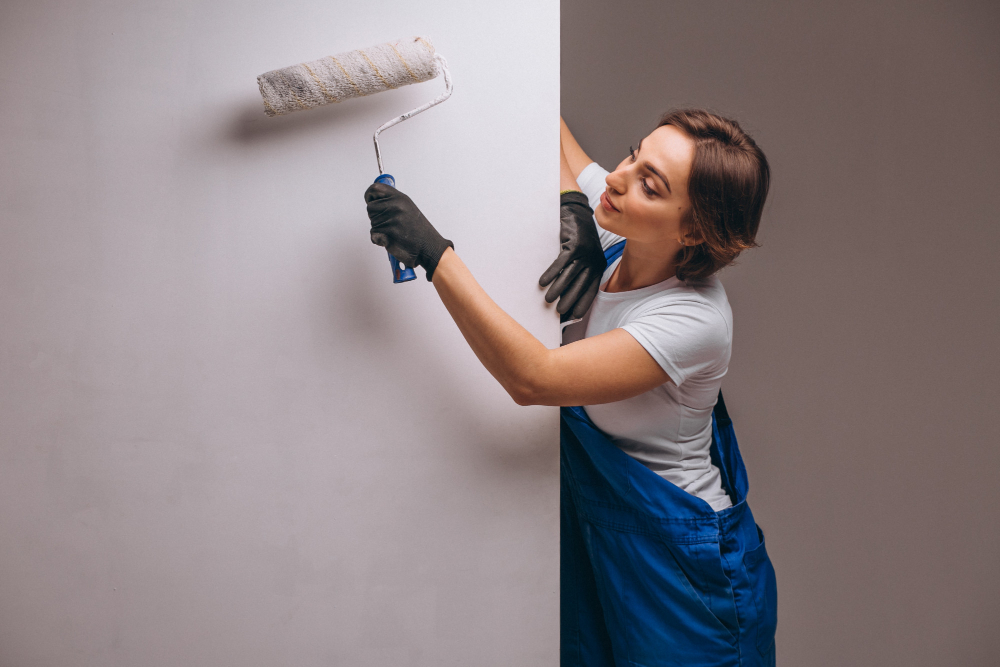Commercial Painting Guidelines: What Every Business Owner Should Know

When it comes to maintaining your commercial property, painting might seem like a straightforward task. However, commercial painting involves much more complexity than residential projects. From safety regulations to surface preparation, understanding proper painting guidelines can save your business time, money, and potential headaches down the road.
Whether you're planning to refresh your office building, retail space, or industrial facility, following established painting guidelines ensures a professional finish that protects your investment and creates a positive impression on customers and employees alike.
Understanding Commercial Painting Standards
Commercial painting differs significantly from residential work in terms of scale, materials, and regulatory requirements. Professional commercial painting contractors must adhere to strict industry standards that govern everything from surface preparation to final inspection.
The most important standards include proper surface cleaning, primer application, and paint selection based on environmental conditions. These guidelines exist to ensure durability, safety, and aesthetic quality that can withstand heavy traffic and commercial use.
Surface Preparation: The Foundation of Quality
Proper surface preparation accounts for approximately 80% of a successful commercial painting project. This critical step involves several key processes that determine the longevity and appearance of your paint job.
Cleaning and Degreasing
Commercial surfaces often accumulate dirt, grease, and other contaminants that prevent paint from adhering properly. Professional cleaning removes these barriers and creates an optimal surface for paint application. This process typically involves pressure washing, chemical cleaning agents, and thorough drying time.
Repair and Patching
Identifying and addressing structural issues before painting prevents future problems and ensures a smooth finish. This includes filling cracks, replacing damaged materials, and addressing any moisture issues that could compromise the paint system.
Priming Requirements
Commercial spaces require specific primers based on the substrate material and intended use. High-traffic areas need primers that enhance durability, while moisture-prone areas require primers with excellent sealing properties.
Paint Selection and Quality Standards
Choosing the right paint for commercial applications requires understanding performance requirements, environmental factors, and maintenance expectations.
Durability Considerations
Commercial paint must withstand significantly more wear than residential paint. High-quality commercial paints offer superior resistance to scuffing, fading, and chemical exposure. These paints typically cost more upfront but provide better long-term value through extended lifespan and reduced maintenance needs.
Environmental Compliance
Modern commercial painting projects must comply with volatile organic compound (VOC) regulations and environmental standards. Low-VOC and zero-VOC paints reduce indoor air pollution and meet increasingly strict environmental guidelines.
Color and Finish Selection
Commercial color schemes should reflect your brand identity while maintaining professional appeal. Finish selection affects both appearance and maintenance requirements. Semi-gloss and satin finishes work well for high-traffic areas, while flat finishes suit low-traffic spaces with minimal cleaning needs.
Safety and Regulatory Compliance
Commercial painting projects must comply with Occupational Safety and Health Administration (OSHA) regulations and local building codes. These requirements protect workers and building occupants during and after the painting process.
Worker Safety Protocols
Professional contractors implement comprehensive safety measures including proper ventilation, protective equipment, and hazard communication. These protocols ensure worker safety and minimize disruption to business operations.
Building Code Compliance
Commercial painting work must meet local building codes, particularly regarding fire safety, accessibility, and environmental regulations. Experienced contractors understand these requirements and ensure full compliance throughout the project.
Project Planning and Timeline Management
Successful commercial painting projects require detailed planning to minimize business disruption and ensure quality results.
Scheduling Considerations
Commercial painting often occurs during off-hours or in phases to maintain business operations. Professional contractors develop detailed schedules that accommodate your business needs while ensuring adequate time for proper surface preparation and curing.
Weather and Environmental Factors
Temperature, humidity, and seasonal conditions significantly impact paint performance. Professional contractors monitor these factors and adjust schedules accordingly to ensure optimal application conditions.
Quality Control and Inspection
Professional commercial painting includes multiple quality control checkpoints throughout the project lifecycle.
Progress Inspections
Regular inspections during surface preparation, priming, and painting phases ensure work meets established standards. These checkpoints allow for immediate correction of any issues before they affect the final result.
Final Walkthrough
A comprehensive final inspection verifies that all work meets specifications and quality standards. This process includes checking for uniform coverage, proper cleanup, and addressing any touch-up needs.
Maintenance and Longevity
Proper commercial painting guidelines extend beyond the initial application to include ongoing maintenance recommendations.
Cleaning Protocols
Different paint finishes require specific cleaning methods to maintain appearance and performance. Professional contractors provide detailed maintenance instructions tailored to your specific paint system.
Touch-Up Procedures
Establishing touch-up procedures helps maintain your commercial space's appearance between major repainting cycles. This proactive approach protects your investment and maintains professional appearance.
Why Professional Expertise Matters
While painting guidelines provide a framework for quality work, professional expertise ensures proper implementation of these standards. Experienced commercial painting contractors understand the nuances of different building types, environmental conditions, and regulatory requirements.
Professional contractors also carry appropriate insurance, licensing, and bonding to protect your business from liability. They have access to commercial-grade materials and equipment that ensure superior results compared to DIY approaches.
Making the Right Choice for Your Business
Following proper painting guidelines protects your commercial property investment and creates an environment that reflects your business's professionalism and attention to detail. Quality commercial painting enhances property value, improves working conditions, and creates positive impressions for customers and employees.
Understanding these guidelines helps you make informed decisions about your commercial painting needs and recognize quality workmanship. When evaluating potential contractors, look for those who demonstrate knowledge of industry standards, safety protocols, and quality control procedures.
If you're looking for commercial painting contractors in South Daytona, FL, contact Color Masters Painting today for free estimates. Our experienced team understands commercial painting guidelines and delivers professional results that protect your investment and enhance your business image.